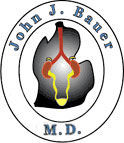


![]() GETTING STARTED
GETTING STARTED
![]()
![]() Site Map
Site Map
![]()
![]() Disclaimer
Disclaimer
![]() ABOUT US
ABOUT US
![]()
![]() Physician
Physician
![]()
![]() Our Services
Our Services
![]()
![]() Patient Info
Patient Info
![]()
![]() Job Opportunities
Job Opportunities
![]()
![]() Contact Info
Contact Info
![]()
![]() Home
Home
![]()
![]() OUR SPECIALTY
OUR SPECIALTY
![]() CENTERS
CENTERS
![]()
![]() Center for Male
Center for Male
![]() Sexuality
Sexuality
![]()
![]() Center for
Center for
![]() Urinary Control
Urinary Control
![]()
![]() Center for
Center for
![]() Prostate Diseases
Prostate Diseases
![]()
![]() PROCEDURES
PROCEDURES
![]() & SURGERIES
& SURGERIES
![]()
![]() In-Office Procedures
In-Office Procedures
![]()
![]() Your Surgery Details
Your Surgery Details
![]() LEARN MORE
LEARN MORE
![]() ABOUT UROLOGY
ABOUT UROLOGY
![]()
![]() Health Calculators
Health Calculators
![]()
![]() Links
Links
![]()
![]() UrologyChannel
UrologyChannel
|
||
|
General Information
| Diagnosis
| Treatment Options
After reading about this topic, please return to:
After lung cancer, cancer of the prostate is the second most common cause of cancer deaths in men in the United States. It is estimated that up to 350,000 men are diagnosed with prostate cancer annually. Adenocarcinoma of the prostate is the clinical term for cancer that begins as a tumor on the outside of the prostate gland. As it grows, it may spread to the inner part of the prostate. If identified early enough in its development and treated before the malignancy spreads too far into the gland or out into surrounding tissues, lymph nodes or bones, it can be treated successfully with a variety of medical procedures. If not, the cancer cells will spread through the bloodstream, infecting other parts of the body, and the disease will claim the patient as one of its estimated 40,000 victims annually. Prostate cancer is often described as a disease of men over age 50. A man's chances of being diagnosed with prostate cancer during his lifetime are about 1 in 6 slightly higher than a woman's chances of having breast cancer (1 out of 10). Significant advances in the detection of the cancer has been made because of improved tests (PSA blood test and transrectal Ultrasound guidance of biopsies), which can detect the disease early in its development, often long before symptoms appear. The likelihood of developing prostate cancer in any given year increases with age, but rises dramatically after age 50. A recent study estimated one in nearly 59,000 men age 40 to 44 are likely to be diagnosed with prostate cancer, rising to one in about 2,600 from age 50 to 59, and one in 80 beyond age 80. The topic of prostate cancer can be very confusing for patients. Invariably, each patient knows other men who are being treated for prostate cancer. It is difficult to understand why one treatment is used in one man and a different treatment is used in another. Again, much of the treatment choice depends on the patient's age and overall health. In general, men do well with prostate cancer, provided it is diagnosed early and treated appropriately. Diagnosis / Stage Determination Prostate cancer is diagnosed with the development of an abnormal PSA, abnormal rectal exam, or both. (Click here for Dr. John Bauer's overview of prostate cancer diagnosis.) Very rarely are symptoms of the disease the first evidence of an abnormality. The prostate biopsy under transrectal ultrasound guidance is used to make the tissue diagnosis. Treatment options are determined based upon the stage of the disease. Over 70% of cancers are detected solely from PSA elevations with a normal rectal exam. Since the advent of PSA, there has been a dramatic stage migration to earlier detectable disease. These days, it is rare to see a patient with metastatic disease walk into the clinic for evaluation. The extent of the cancer is referred to as the stage of disease . Stage A or T1 refers to disease which is identified incidentally at the time of surgery to remove a benign prostate. It also refers to cancers detected based on an elevated PSA without an abnormality on rectal exam. Stage B or T2 refers to cancer that can be felt on the digital rectal examination. Both Stage A and B (Tl and T2) are referred to as organ confined prostate cancer. Stage C or T3-4 disease includes those cancers that have spread outside the confines of the prostate. This determination is often made at the time of the rectal exam or the ultrasound examination. Stage D refers to those tumors, which have spread outside the prostate to the lymph nodes, bones or other sites. Treatment of prostate cancer depends on the stage of disease and the age and overall health of the patient. Treatment options available for organ confined prostate cancer (Stage A and B. T1 and T2) include observation alone or watchful waiting, radiation therapy, and radical prostatectomy. In some places in this country, cryosurgery is also used to treat organ confined prostate cancer. Although publicized heavily, this technique is still in the investigational stages. It is currently not the standard of care and it is recommended that it only be carried out as part of an investigational protocol under the auspices of a university setting. Watchful Waiting
Radiation Therapy
Complications of radiation can include damage to the urinary bladder or the rectum. This can result in urinary frequency and urgency. It can also cause diarrhea and rectal pain. Incontinence, which is the loss of urinary control, develops in less than 1% of men. [source ] Impotence, the inability to get an erection, may develop on a delayed basis in up to 1/3 of patients. [source] Radiation therapy has very effective treatment results at 5 and 10 years. The results are not as favorable at the 15-year mark. Radiation is a good choice for men in their 70's without other significant health troubles. It may at times be appropriate for men in their 60's who have other health troubles or who have a type of cancer with low biologic potential. If cancer remains in the prostate after radiation, a later attempt to remove the prostate through surgery is not a favorable option.
Brachytherapy
Please see the comments of Dr. Patrick Walsh, a leading advocate of surgical extirpation of localized prostate cancer regarding the recent claims of those performing brachytherapy. There are definitely differing opinions regarding the effectiveness of this therapy. The patient must choose the therapy that best fits his goals and lifestyle choices.
Radical prostatectomy
If there is evidence of extension of the cancer up to the margins of the surgical resection, radiation may be added as follow-up treatment. For men with Stage C (T3-4) disease, treatment options include observation, radiation and hormonal therapy. Radiation therapy may provide control of local symptoms that would otherwise develop due to the size of the cancer as it encroaches on the urethra and bladder. Radical prostatectomy is typically not recommended for Stage C disease except in the very young man. For very detailed technical views on these procedures, see these links:
Hormonal Therapy
Often times, in combination with either orchiectomy or a GNRH analog, an anti-androgen is used as well. Currently, the anti-androgen used is Flutamide (Eulexin), which is taken as one to two tablets 3 times a day. This interferes with the small amount of testosterone made by the adrenal gland. Side effects of hormonal therapy include impotence in all men and hot flashes in some men. There are now many other options for anti-androgens such as Casodex (Biclutamide) and Nilandron (nilutamide) both of which are taken less frequently and have lower gastrointestinal side effects. The staff of Michigan Urology Associates, Inc. and the Center for Prostate Diseases also performs many procedures in the office at a reduced fee compared to the same procedure in the Hospital. For descriptions about these office procedures please go to the specific links for the procedure that you are interested in as marked below. Our practice treats a variety of urological conditions included below are the most common procedures that we perform in the office that are involved in the diagnosis and treatment of prostate cancer:
Michigan Urology Associates, P.C. also performs many of its urological services in the local Hospitals or surgical facilities. The outpatient and inpatient surgeries listed below are performed at these facilities. The procedures listed below are direct links to "Your Surgery Details" which will have everything that you would want to know about your surgical procedure from after the diagnosis until fully recovered. Please use this section to learn about your upcoming surgery or to contemplate whether you really want a surgical procedure. Open Surgery:
Center for Prostate Diseases [ Additional educational material | Patient forms and Health calculators Why use the Center ] | ||
www.flinturology.com Flint, Michigan [map] ~ ~ ~
FREE Plug-ins you may need for special pages of our site: |

[an error occurred while processing this directive]
